The 8 Best Mini Solar Power Banks We Tested
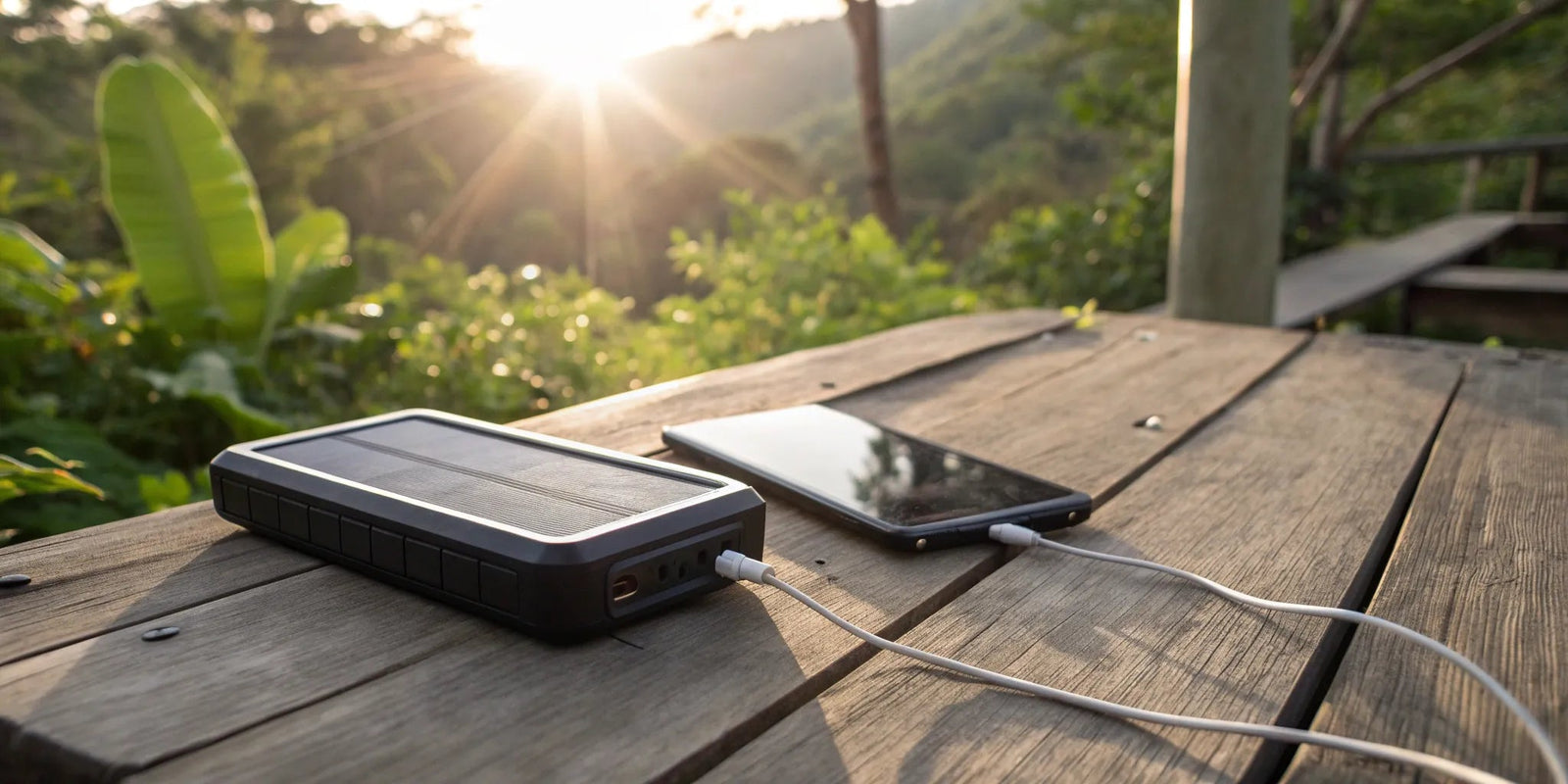
Let’s clear up the biggest myth about solar chargers right away: the solar panel is not the primary way to charge them. In reality, the solar feature is best thought of as an emergency backup or a trickle charge for when you’re completely off-grid. For best results, you should fully charge your mini solar power bank from a wall outlet before you head out. Understanding this is the key to not being disappointed with your purchase. This article is an honest look at what these devices can—and can’t—do. We’ll break down the pros and cons, bust a few more myths, and show you how to choose a reliable power bank that fits your real-world needs.

Portable Solar Power Bank 26800mAh - 99Wh Fast Charger
Lithium Polymer (Li-Po) battery. PD fast charging. Holds up to 8 days of reliable power on a single charge. Boasts a charging speed 50% faster than ordinary portable chargers.
Shop NowKey Takeaways
- Solar is for Emergencies, Not Everyday Charging: Think of the solar panel as your backup plan for topping off your battery on the trail, not a fast way to charge from zero. For the best results, always charge your power bank fully from a wall outlet before you head out.
- Choose Features That Fit Your Lifestyle: Consider how you'll actually use your power bank. A rugged, high-capacity model is perfect for multi-day hikes, while a compact, lightweight one is better suited for your daily commute or tossing in a travel bag.
- A Little Care Goes a Long Way: Protect your power bank from extreme temperatures to preserve its battery life. And remember the golden rule of air travel: always pack your power bank in your carry-on, never in a checked bag.
What Exactly Is a Mini Solar Power Bank?
If you’ve ever found yourself with a dead phone battery while hiking, traveling, or during a power outage, you’ve probably wished for a power source that didn’t need a wall outlet. That’s where a mini solar power bank comes in. Think of it as a portable battery pack with a superpower: it can recharge itself using sunlight. These compact chargers are designed for life on the move, giving you a reliable way to keep your essential devices powered up, whether you're camping in the wilderness or navigating a new city. Many even come with handy extras like built-in flashlights or cables, making them a versatile tool for any adventure or emergency kit.
How They Work
The magic behind a solar power bank lies in its small solar panels. These panels are made up of photovoltaic cells, which are designed to capture sunlight and convert it into electrical energy. This energy is then stored in the power bank’s internal battery, ready for you to use whenever you need to charge your phone, tablet, or other gadgets. This process gives you a sustainable way to generate your own power, freeing you from the grid. It’s an ideal solution for anyone who spends a lot of time outdoors and needs to keep devices powered without access to conventional electricity.
The Pros and Cons
The biggest advantage of a mini solar power bank is its eco-friendliness. You’re using a clean, renewable energy source to power your devices, which is a great feeling. They offer true off-grid freedom, which is invaluable for campers, hikers, and anyone building an emergency preparedness kit. However, it’s important to have realistic expectations. The "con" that surprises most people is the charging speed. Relying solely on those small solar panels to charge the power bank can be incredibly slow—we’re talking hours or even days of direct sunlight for a full charge. This is a critical detail that many product descriptions don't emphasize enough.
Solar Power Bank Myths, Busted
Let’s clear up a couple of common misconceptions. The biggest myth is that the solar panels are the primary way to charge the power bank. In reality, the solar feature is best thought of as a backup or an emergency trickle charge. For best results, you should fully charge the power bank from a wall outlet before you head out, and then use the sun to top it off. Another myth is that all solar power banks are indestructible. While many are built to be rugged, the internal battery is still sensitive to extreme heat. Leaving your power bank baking in the sun on a car dashboard can damage the battery and shorten its lifespan.
What to Look For in a Solar Power Bank
Shopping for a solar power bank can feel a bit overwhelming with all the specs and features out there. But once you know what to look for, it’s much easier to find the right one for your needs. Whether you’re planning a week-long trek, preparing an emergency kit, or just want a reliable backup for daily use, focusing on a few key areas will help you make a smart choice. It’s all about matching the power bank’s capabilities to how you plan to use it. From battery size and charging speed to how well it can handle a little rain, these are the details that truly matter.
Battery Capacity and Charging Speed
First up is battery capacity, measured in milliampere-hours (mAh). This number tells you how much juice the power bank can hold. A smaller 10,000 mAh unit is great for a day trip, giving you a couple of phone charges. For longer trips or charging multiple devices, you’ll want to look at larger capacities, like 20,000 mAh or more. Just remember, a bigger battery means a heavier power bank. Also, pay attention to charging speed. You don’t want to be tethered to your charger all day. Look for models with fast-charging ports that can quickly power up your devices. Some advanced units even offer smart charging, which automatically delivers the fastest possible charge to whatever you plug in.
Durability and Weather-Resistance
If you’re taking your power bank outdoors, it needs to be tough. Many solar chargers are built for adventure, with rugged casings that can handle bumps and drops. Weather resistance is another huge factor. Look for an IP rating, which tells you how well it’s protected against dust and water. For example, an IP66 rating means it’s completely dust-tight and can withstand powerful water jets—perfect for a sudden downpour on the trail. A durable, weather-resistant power bank gives you peace of mind, knowing your power source is protected no matter where you are.
Portability and Design
A solar power bank isn’t much good if it’s too bulky to carry. The best designs strike a balance between capacity and portability. Think about how you’ll be carrying it—in a backpack, a car, or a purse? This will help you decide on the right size and weight. Some of the most clever designs feature foldable solar panels. These give you a much larger surface area to soak up sunlight, which speeds up solar recharging, but they fold down into a compact unit that’s easy to pack. This is a fantastic feature for backpackers and campers who need to recharge efficiently on the go.
Device Compatibility and Smart Features
What are you planning to charge? Your phone, tablet, camera, and headphones might all use different connections. A good power bank should have multiple output ports to handle your gear, including both USB-A and USB-C. Modern devices, in particular, benefit from USB-C for faster power delivery. Using high-quality cables, like KEUTEK’s ProSeries USB-C, ensures you’re getting the most efficient charge possible. Smart features, like pass-through charging (which lets you charge the power bank and your devices at the same time), also add a layer of convenience.
Bonus Features (Like Built-in Flashlights)
Sometimes it’s the little extras that make a big difference. A built-in LED flashlight is a common and incredibly useful feature, especially for camping or during a power outage. Many models offer multiple light modes, including an SOS signal for emergencies. Other handy bonuses can include integrated charging cables so you have one less thing to remember, a compass, or even a carabiner clip to easily attach the power bank to your backpack. While not essential, these thoughtful additions can make your solar power bank a much more versatile tool for travel, emergencies, and outdoor adventures.
Our Top 8 Picks for Mini Solar Power Banks
After putting a lineup of popular mini solar power banks to the test, we've narrowed it down to our top eight picks. We looked at everything from how quickly they charge under the sun to how well they hold up against the elements. Our goal was to find options that work for everyone, whether you're planning a week-long backpacking trip, preparing an emergency kit for your family, or just need a reliable backup for your daily commute. We considered battery capacity, durability, portability, and of course, how effectively they harness solar power.
Each model on this list was chosen for its standout features and real-world performance, so you can feel confident you're getting a power bank that delivers when you need it most. We know that the "best" solar charger isn't a one-size-fits-all solution. A serious trekker needs something different than a parent packing for a family beach day. That's why our list includes a variety of sizes, capacities, and price points. We've highlighted what makes each one special, so you can easily find the perfect match for your lifestyle and your devices. From ultra-durable models built for the trail to lightweight options perfect for tossing in a bag, we've covered the best of the best. Let's get into the ones that made the cut.
1. KEUTEK SolarCharge 10000
The KEUTEK SolarCharge 10000 is built like a tank, making it our top choice for rugged outdoor use. Its durable construction can handle drops, dust, and water, which is exactly what you need when you're off the grid. What really stands out is its impressive battery life; it can hold enough power to keep your devices running for days. This makes it an incredibly reliable companion for extended camping trips or a crucial part of any emergency preparedness kit. If you need a power bank that won’t quit, this is it. For those who prioritize durability and long-lasting power, KEUTEK offers a range of fast portable power solutions.
2. Anker PowerCore Solar 20000
Anker has a well-earned reputation for creating high-quality charging gear, and the PowerCore Solar 20000 is no exception. It combines a large 20,000mAh battery with the brand’s signature fast-charging technology, ensuring your devices get powered up quickly. While the solar panel is best for emergency top-offs rather than a full recharge, the power bank itself holds a massive amount of energy. It’s a solid, dependable choice for travelers and anyone who needs to charge multiple devices, like a phone and a tablet, without searching for an outlet. The build quality is excellent, giving you a device you can count on for years.
3. Goal Zero Venture 30
If your adventures tend to be on the wild side, the Goal Zero Venture 30 is designed for you. This power bank is known for its rugged, weatherproof design that can withstand rain, sleet, or being tossed around in a backpack. It features multiple output ports, allowing you to charge a couple of devices at the same time. It’s a versatile and tough piece of equipment that’s become a favorite among serious hikers, climbers, and campers. The Venture 30 is a great middle-ground option, offering a good balance of portability, power, and durability for any outdoor excursion.
4. BLAVOR Solar Power Bank
The BLAVOR Solar Power Bank is a fantastic all-arounder that’s both user-friendly and packed with features. It offers the flexibility of dual charging, so you can power it up via a USB cable before you leave home and then use the solar panels to keep it topped off while you’re out. It’s compact, easy to use, and often includes bonus features like a built-in flashlight and compass, making it a popular choice for casual campers and hikers. If you’re looking for a straightforward, no-fuss solar charger that gets the job done without a steep learning curve, this is an excellent option to consider.
5. RAVPower 25000mAh
For the true power user, the RAVPower 25000mAh solar power bank is a game-changer. Its massive battery capacity means you can charge your smartphone multiple times over or keep several gadgets running simultaneously. It’s equipped with multiple charging ports and fast-charging technology, so you won’t be waiting around all day for your devices to power up. While it's a bit heavier than smaller models, the extra juice is well worth it for long trips, family outings, or for anyone who relies heavily on their tech. This is the power bank you bring when you can't afford to run out of battery.
6. ECO-WORTHY Solar Bank
If minimizing your environmental impact is a priority, the ECO-WORTHY Solar Bank is a standout choice. This power bank is designed with high-efficiency solar panels that do a better job of converting sunlight into energy compared to many other models on the market. It’s a great way to stay connected while leaning on a cleaner power source. This device is perfect for the eco-conscious adventurer who wants reliable backup power without compromising their values. It proves that you can have both performance and sustainability in one compact package, making it a smart choice for environmentally friendly travel.
7. BEARTWO Portable Solar Bank
When every ounce in your pack counts, the BEARTWO Portable Solar Bank is an ideal choice. It’s incredibly compact and lightweight, so you’ll barely notice it’s there until you need it. Despite its small size, it’s surprisingly durable and built to handle the bumps and scrapes of the trail. This power bank is perfect for day hikers, trail runners, or anyone who wants an emergency power source without being weighed down. It provides just enough power to give your phone a critical boost, ensuring you can make a call or check your map when you need it most.
8. QiSa Solar Charger
The QiSa Solar Charger proves that you don’t have to spend a lot to get a reliable power bank. It’s an affordable yet highly efficient option that’s perfect for travelers on a budget or anyone new to solar chargers. It typically comes with multiple USB ports, allowing you to charge a few devices at once, and it powers them up surprisingly quickly. Its practical design and solid performance make it a popular choice for everyday use, festivals, and casual weekend trips. If you want a dependable solar charger that offers great value, the QiSa is tough to beat.
Solar vs. Traditional: Which Is Right for You?
Deciding between a solar and a traditional power bank comes down to how you plan to use it. They serve different purposes: a traditional power bank is great for daily commutes, while a solar one is perfect for off-grid adventures. Let's break down the key differences to help you figure out which one fits your lifestyle.
Power Source and Efficiency
The biggest misconception about solar power banks is that they run purely on sunlight. In reality, they charge most efficiently from a wall outlet. The solar panels are a backup or emergency power source, perfect for slowly trickling charge into your device when you're miles from an outlet. Traditional fast portable power banks rely solely on a wall or car charger, making them incredibly efficient and reliable for everyday use when you have consistent access to electricity.
Which One Charges Faster?
When it comes to speed, there’s no contest. A standard power bank charges quickly and predictably. Paired with one of today's fast wall chargers, you can fully charge a 10,000mAh battery in just a couple of hours. Solar power banks, however, charge very slowly using only the sun. The charging speed depends on the intensity of the sunlight, making it great for an emergency top-up but impractical when you need power in a hurry.
The Eco-Friendly Choice
If sustainability is a top priority, a solar power bank is the clear winner. By harnessing the power of the sun, you can get a charge without relying on the electrical grid. This makes them a fantastic, earth-friendly option for powering your devices. Using renewable energy sources like solar helps reduce your carbon footprint, which is a huge plus for any eco-conscious adventurer. It’s a small way to make a positive impact while staying connected.
Breaking Down the Cost
You’ll notice that solar power banks typically have a higher upfront cost than standard power banks with the same battery capacity. That extra cost covers the solar panel technology and often more rugged, weather-resistant construction. Think of it as an investment in versatility and peace of mind. While a traditional power bank is more budget-friendly for daily use, the higher price of a solar model buys you the freedom to charge your devices anywhere the sun shines.
When to Use a Solar Power Bank
A solar power bank is one of those pieces of gear that you might not think you need until you really need it. It’s more than just a portable charger; it’s your ticket to staying powered up when traditional outlets are out of reach. Think of it as your personal, pocket-sized power grid. Whether you’re scaling a mountain, weathering a storm, or just navigating a long day of travel, having a reliable source of energy can make all the difference. These devices are designed for moments when being connected and prepared is non-negotiable. Let’s look at a few situations where a solar power bank truly shines.
For Your Next Adventure
If you love spending time outdoors, you know that being off-grid is part of the appeal. But that doesn't mean your essential tech has to die. A solar power bank is a must-have for multi-day camping, hiking, or backpacking trips. When you're miles from the nearest outlet, it can keep your GPS, phone, and headlamp running. Some models are designed to be a true workhorse for extended trips, providing enough juice for up to eight days on a single charge. Instead of rationing your battery life, you can focus on capturing photos, navigating trails, and enjoying the peace of mind that comes with being prepared.
In Case of an Emergency
Power outages can happen unexpectedly, whether from a storm, a heatwave, or a local grid issue. During these times, staying informed and in touch with loved ones is critical. A solar power bank is an essential part of any emergency preparedness kit. While everyone else is searching for batteries, you’ll have a renewable power source to keep your phones and other small devices charged. With a high-capacity model, like one with 26,800 mAh, you have a significant power reserve to rely on. It’s a simple step you can take to ensure you have access to reliable power solutions when you need them most.
Perfect for Travel
We’ve all been there: stuck at an airport with a 10% battery and every single outlet is taken. For frequent travelers, a solar power bank offers freedom from the wall socket. It’s perfect for long flights, train rides, or road trips where power access is limited. You can charge it up before you leave and let the sun top it off during your travels. Many modern power banks come with multiple USB ports and wireless charging capabilities, so you can power up your phone, headphones, and tablet all at once. It’s also a great companion to a fast car charger for keeping everything topped off on the road.
As Your Everyday Backup
You don’t have to be an adventurer or a prepper to benefit from a solar power bank. It’s also an incredibly practical tool for daily life. Think of it as your personal backup for those long days filled with back-to-back meetings, classes, or errands. If you rely on your phone for work, communication, and navigation, you can’t afford to have it die unexpectedly. Tossing a compact solar power bank in your bag means you’re always prepared. It’s a reliable safety net that complements your other fast-charging gear, ensuring you stay connected no matter where your day takes you.
How to Choose the Right One
Picking the right mini solar power bank isn't about finding a single "best" model—it's about finding the one that fits your life perfectly. With so many options out there, it can feel a little overwhelming. But don't worry, I'll walk you through exactly what to look for. By thinking through a few key areas, you can narrow down the choices and find a reliable power bank that will be ready for you on your next camping trip, long flight, or unexpected power outage.
The goal is to invest in a piece of gear that you can truly count on. Let's break down the four most important factors to consider so you can make a choice you'll be happy with for years to come.
Check Your Device Compatibility
First things first: make sure the power bank can actually charge your gear. It sounds obvious, but it’s easy to overlook. Start by looking at the ports. Does the power bank have the USB-A and USB-C ports you need for your phone, tablet, or headphones? If you’re already using high-quality cables like KEUTEK’s ProSeries USB-C, you’ll want a power bank that supports that connection to get the fastest charge possible. Compatibility is also about power output. A small power bank might be fine for your phone, but it will struggle to charge a larger device like an iPad or a laptop. Check the specs to ensure the output matches what your devices need.
Consider Your Environment
Think about where you’ll be using your solar power bank most often. If you’re an outdoor enthusiast who loves hiking or camping, you’ll want something rugged. Look for features like a durable, shock-absorbent casing and a good water-resistance rating (like IPX5 or higher), which means it can handle splashes and rain without any issues. Many outdoor-focused models also come with handy extras like a built-in flashlight or compass. If you’re more of a traveler or remote worker, you might prioritize a lightweight, compact design that slips easily into a backpack or carry-on. Your environment dictates which features will be genuinely useful versus just being nice to have.
Plan Your Budget
You don’t have to spend a fortune to get a great solar power bank, but it’s helpful to have a budget in mind. Prices generally fall between $30 and $65, with higher-priced models typically offering larger battery capacities, faster charging speeds, and more durable construction. It’s important to know that the solar feature itself usually adds about $10 or more to the cost compared to a standard power bank. So, you’re not really buying it to save money on "free" energy from the sun. Instead, think of it as paying a small premium for the peace of mind and convenience of being able to recharge your devices absolutely anywhere.
Look at Warranty and Support
A company’s warranty is a good indicator of how much they stand behind their product. A one-year warranty is pretty standard, but some brands offer longer coverage, which shows they’ve built their gear to last. Beyond the warranty, consider the quality of customer support. Before you buy, it’s a great idea to spend a few minutes reading customer reviews to see how the company handles questions or issues. Choosing a brand that is responsive and committed to quality ensures you’ll have a better experience if you ever need help. This is where investing in a trusted name in fast portable power can really pay off.
Get the Most Out of Your Power Bank
You’ve found the perfect solar power bank—now let’s make sure it lasts. A little bit of care goes a long way in keeping your trusty backup power source ready for any adventure or emergency. Think of it as an investment in staying connected. By following a few simple practices for charging, storage, and safety, you can extend its lifespan and ensure it performs reliably when you need it most. Here’s everything you need to know to keep your power bank in top shape.
How to Charge It for Best Results
To get the best performance, always use a high-quality cable and wall adapter. Pairing your power bank with a reliable fast wall charger ensures it juices up efficiently without straining the battery. While you don't need to charge it to 100% every time, it's a good idea to give it a full charge cycle occasionally. For long-term storage, aim to keep the battery level around 50%. This helps preserve the battery's health over time. A well-maintained, quality power bank can serve you well for years and can even hold its charge for up to six months, so it’s always ready to go when you are.
Proper Care and Storage
Your power bank is tough, but it’s not invincible. The biggest enemies of its internal battery are extreme temperatures. Avoid leaving it in a hot car or out in the freezing cold, as this can permanently damage its ability to hold a charge. Moisture is another hazard, so keep it dry and away from rain or spills. When you’re not using it, store your power bank in a cool, dry place like a desk drawer or a gear bag. Taking these simple steps will protect the delicate electronics inside and ensure your portable power solution has a long and productive life, ready for your next trip.
Important Safety Tips
Safety first, always. It’s important to know the signs of a failing battery so you can replace your power bank before it becomes a hazard. If you ever notice it starting to swell, get unusually hot while charging, or emit a strange smell, it’s time to retire it immediately and dispose of it properly. Never try to open or repair a power bank yourself. Also, make sure it has room to breathe while charging—don't leave it under blankets or in a tightly packed bag where heat can build up. Using certified, high-quality ProSeries cables also adds a layer of safety by preventing overcharging and short-circuiting.
Know the Rules for Air Travel
Taking your power bank on a flight? The most important rule to remember is that it must be in your carry-on luggage, not your checked bag. This is a universal safety regulation from airlines worldwide. The good news is that most portable chargers, especially those under 27,000mAh, are perfectly fine to fly with. The typical limit is 100 watt-hours (Wh) per battery, and most mini solar power banks fall well below this threshold. While you generally won't need special approval, it's always a smart move to check the specific airline regulations before you head to the airport, just to be sure. This way, you can travel without any hiccups.
Where to Buy Your Solar Power Bank
Once you’ve decided which mini solar power bank is right for you, the next step is making the purchase. Where you buy from is just as important as what you buy. A little bit of smart shopping can save you from headaches down the road and ensure you get a reliable product that’s backed by solid customer support.
Shop at Trusted Retailers
Your first instinct might be to check massive online marketplaces like Amazon, and they certainly have a huge selection. However, it’s also a great idea to buy directly from the manufacturer’s website. When you purchase from a brand like KEUTEK, you know you’re getting an authentic product, not a counterfeit. You’ll also have direct access to their customer service team and the full manufacturer's warranty. Whether you're gearing up for a camping trip or building an emergency kit, buying from a trusted source ensures your portable power solutions are genuine and reliable.
What to Expect to Pay
The price for a quality mini solar power bank can range from around $30 to over $80. What causes the price difference? It usually comes down to battery capacity (mAh), the quality of the solar panels, durability, and brand reputation. While a super-cheap, no-name option might seem tempting, it often comes with a cost in performance and safety. Investing a little more in a well-reviewed product from a reputable brand typically means you’re getting a power bank that will hold a charge, withstand the elements, and last for years to come.
How to Find a Good Deal
Everyone loves a good deal, but a good deal means getting the best value, not just the lowest price. Keep an eye out for seasonal sales around holidays like Black Friday or during back-to-school season. Many brands also offer a discount on your first purchase if you sign up for their email newsletter. This is a great way to stay in the loop about new products and promotions. Also, check the brand’s website directly for any special offers or bundles—sometimes you can get a package deal with a fast wall charger or other accessories.
Red Flags to Avoid
As you shop, it’s important to know what to watch out for. Be cautious of products with very few reviews or a flood of generic, five-star reviews that all sound the same. Vague product descriptions that don’t list key specs like battery capacity or output wattage are another red flag. Before you buy, always check the warranty information and the seller’s return policy. A company that stands behind its product will offer a clear, fair warranty. If you’re unsure about a product, do a quick search for third-party reviews to spot potential fakes and get an unbiased opinion.
Related Articles
- Solar Power Banks: Ultimate Guide (2024)
- Solar Power Bank Guide: How to Choose & Use
- Solar Charging Power Bank: Ultimate 2025 Guide
- Best Solar Power Banks of 2025: Top Picks & Reviews

Portable Solar Power Bank 26800mAh - 99Wh Fast Charger
Lithium Polymer (Li-Po) battery. PD fast charging. Holds up to 8 days of reliable power on a single charge. Boasts a charging speed 50% faster than ordinary portable chargers.
Shop NowFrequently Asked Questions
How long does it actually take to charge a power bank using only solar power? You should think of the solar panel as an emergency backup, not the main charging method. Relying solely on its small solar panels to go from empty to full could take several days of direct, bright sunlight. The most effective way to use your power bank is to charge it fully from a wall outlet before you leave home, and then use the sun to top it off or provide a trickle charge while you're off-grid.
Is it okay to leave my solar power bank in direct sunlight all day? While it needs sunlight to charge, leaving it in extreme heat for extended periods—like on a car dashboard or directly on hot sand—can damage the internal battery. High temperatures will shorten its overall lifespan and reduce its ability to hold a charge. It's best to place it in a spot where it gets sunlight but has some ventilation, and avoid leaving it to bake for hours on end.
How do I know what size (mAh) power bank I need? This really comes down to how you plan to use it. For daily use or a short day trip, a 10,000 mAh power bank is a great choice, giving you about two full phone charges. If you're planning a longer trip, need to charge multiple devices, or are preparing an emergency kit, you'll want to look at a larger capacity like 20,000 mAh or more. Just keep in mind that a bigger battery means a heavier and bulkier unit.
Is it worth paying more for a well-known brand? Yes, it usually is. When you invest in a power bank from a reputable company, you're paying for higher-quality components, more accurate battery capacity ratings, and better safety features. These models are built to last and are often backed by a solid warranty and responsive customer support, which provides peace of mind that your gear will work when you truly need it.
Can I charge the power bank from a wall outlet and charge my phone from the power bank at the same time? Some models offer a feature called "pass-through charging" that allows you to do exactly that. It’s an incredibly convenient feature, especially when you're traveling and only have access to a single wall outlet. However, not all solar power banks have this capability, so if this is an important feature for you, be sure to check the product specifications before you buy.


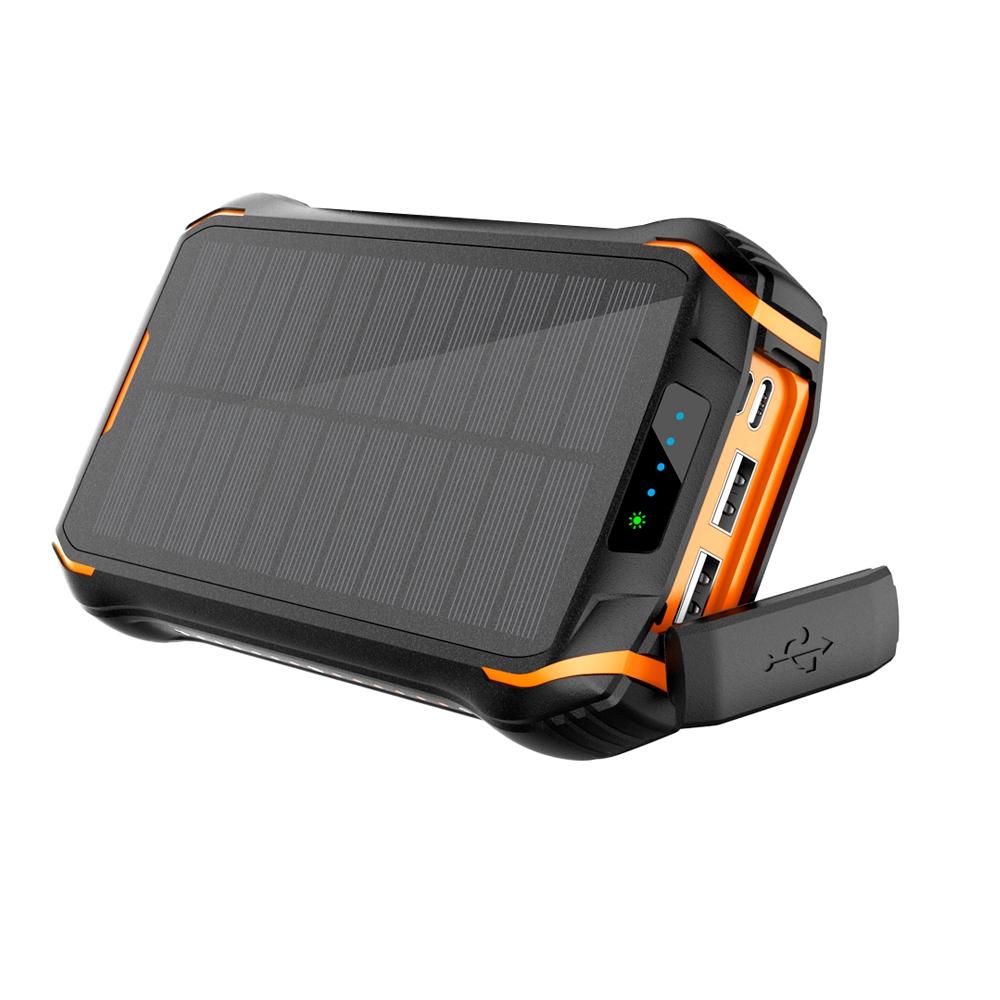
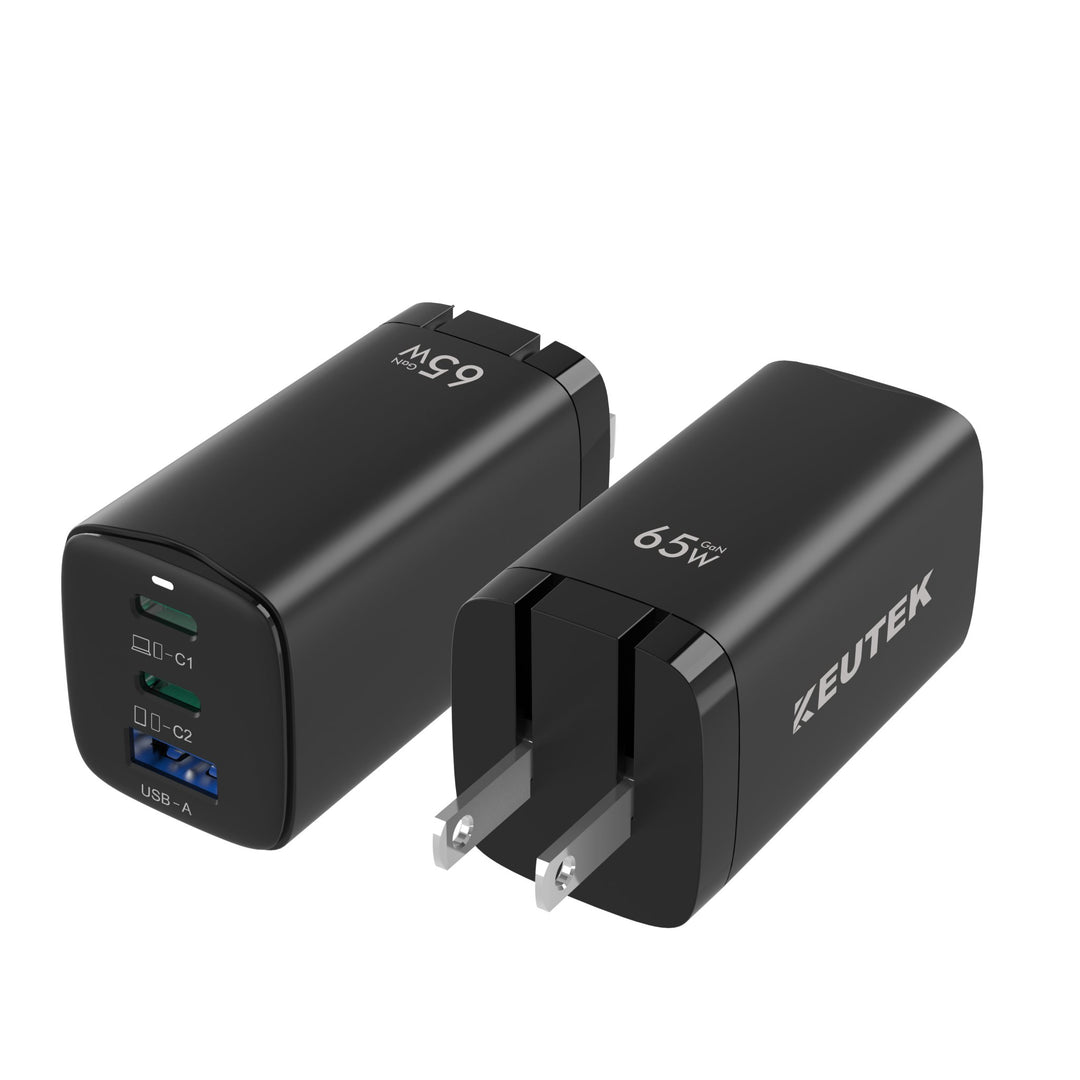
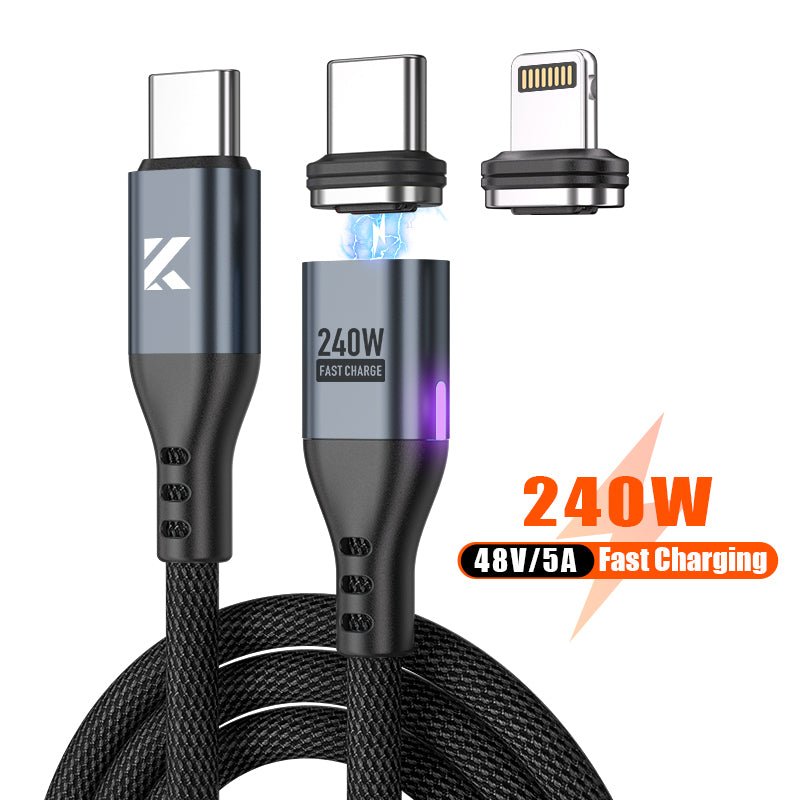
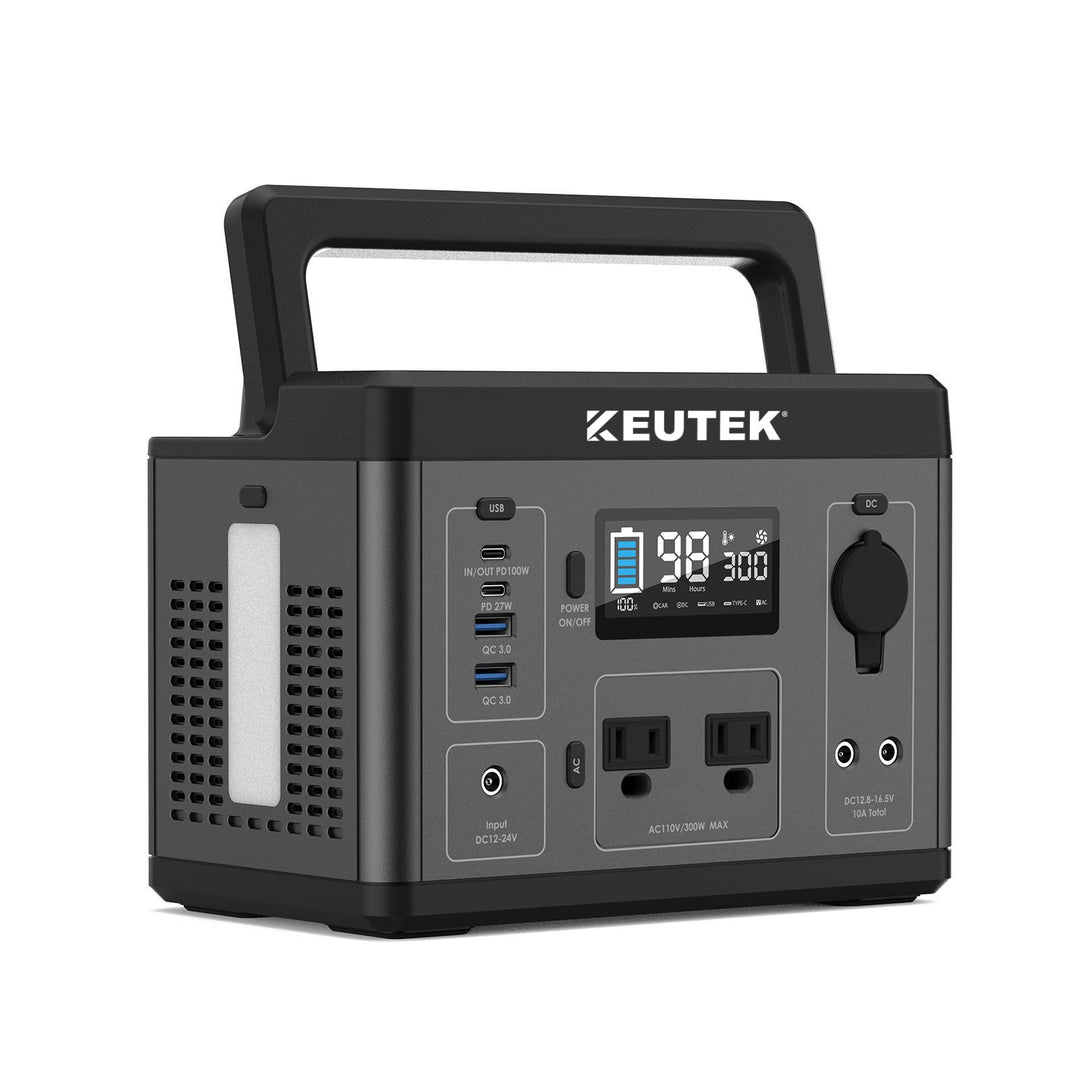
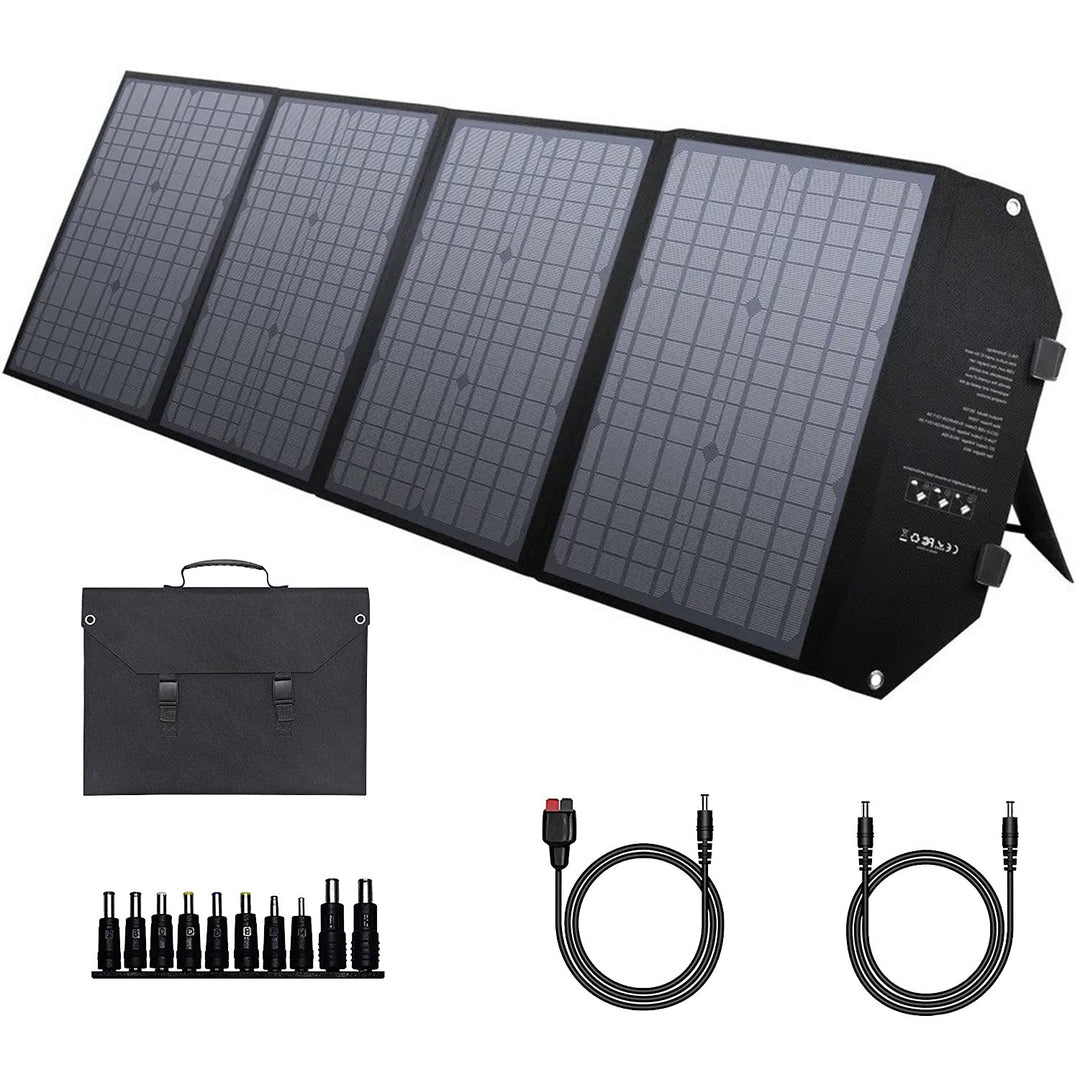
Leave a comment